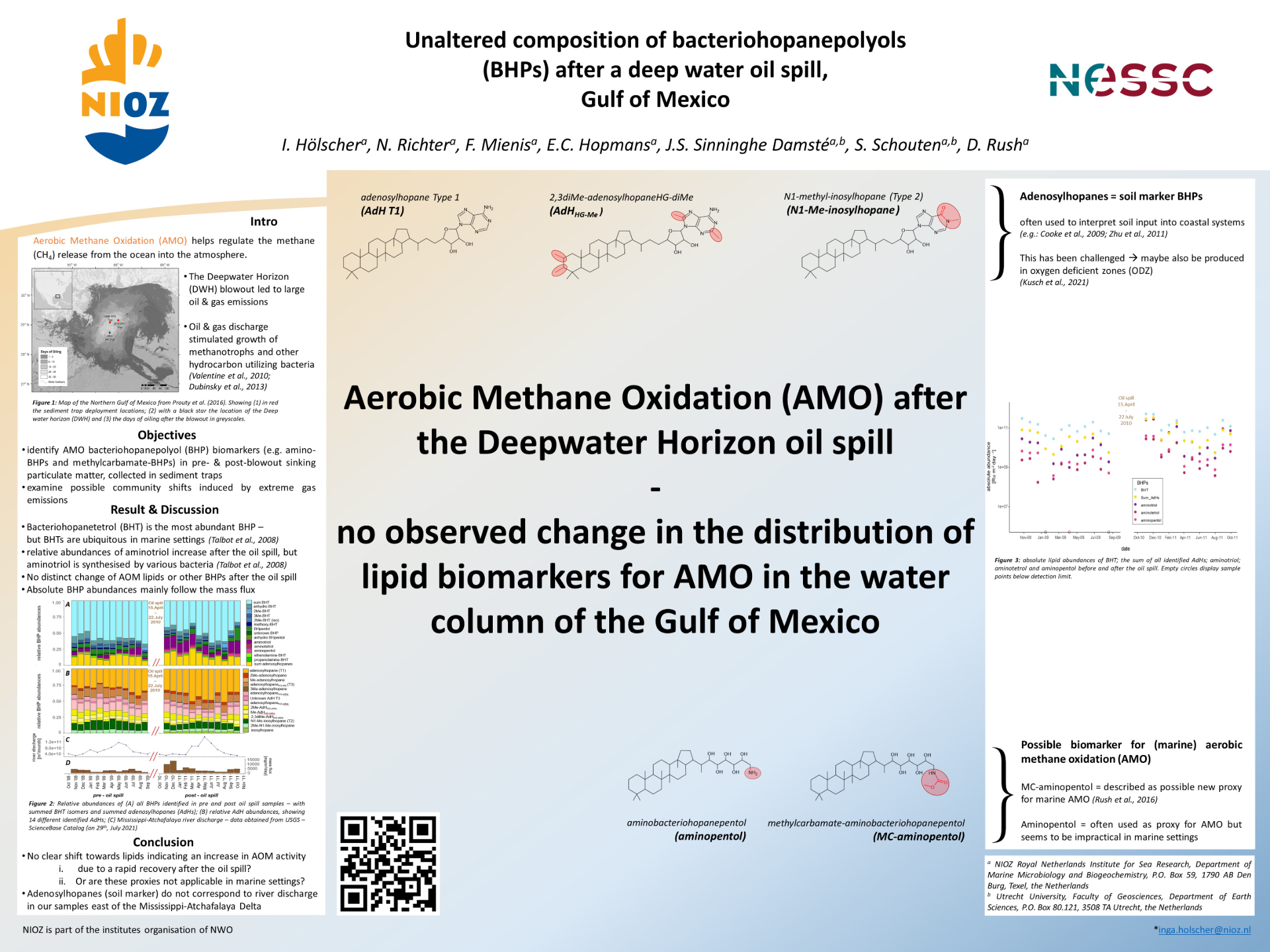Inactive user
The page you are trying to access has been deactivated because Inga Hölscher is not working for NIOZ anymore.
Go to Staff.
Remains of bacteria help us understand past natural environments
Bacteria living in the water and the seafloor of our oceans play an important role for life on our planet. Some groups of bacteria consume the greenhouse gas methane (CH4) from the water before it reaches the atmosphere, where it would accelerate climate warming. I want to understand which bacteria remove the methane in ocean waters now, and also in the past, when more or less methane was released from the ocean floor.
Comprehend the past to understand the present and future
Insights into past activities of bacteria can tell us more about the environment and climate they once lived in. Therefore, I am studying fossil remains of bacterial cells that can be found in the ocean floor up to millions of years after their death. I am most interested in small chemical molecules called lipids: the building blocks for the bacterial cell membrane that protects the cell from its environment. Lipids can give us information about, for example, water temperature, nutrient availability, pH and what food the bacteria consumed.
From land to ocean
I am also interested in the input of material from land into the ocean to help us understand ocean pollution and climatic changes in coastal areas. With the use of bacterial lipids specific to certain soil types, we try to trace back bacterial inputs from different regions on land. This might tell us more about past environmental conditions on land, and which and how material was transported into the ocean. But we still lack a lot of information about the origin of many lipids, which means that the first step is to understand where, how and who produced specific lipids before we can use them to interpret past environmental conditions.
Current projects:
